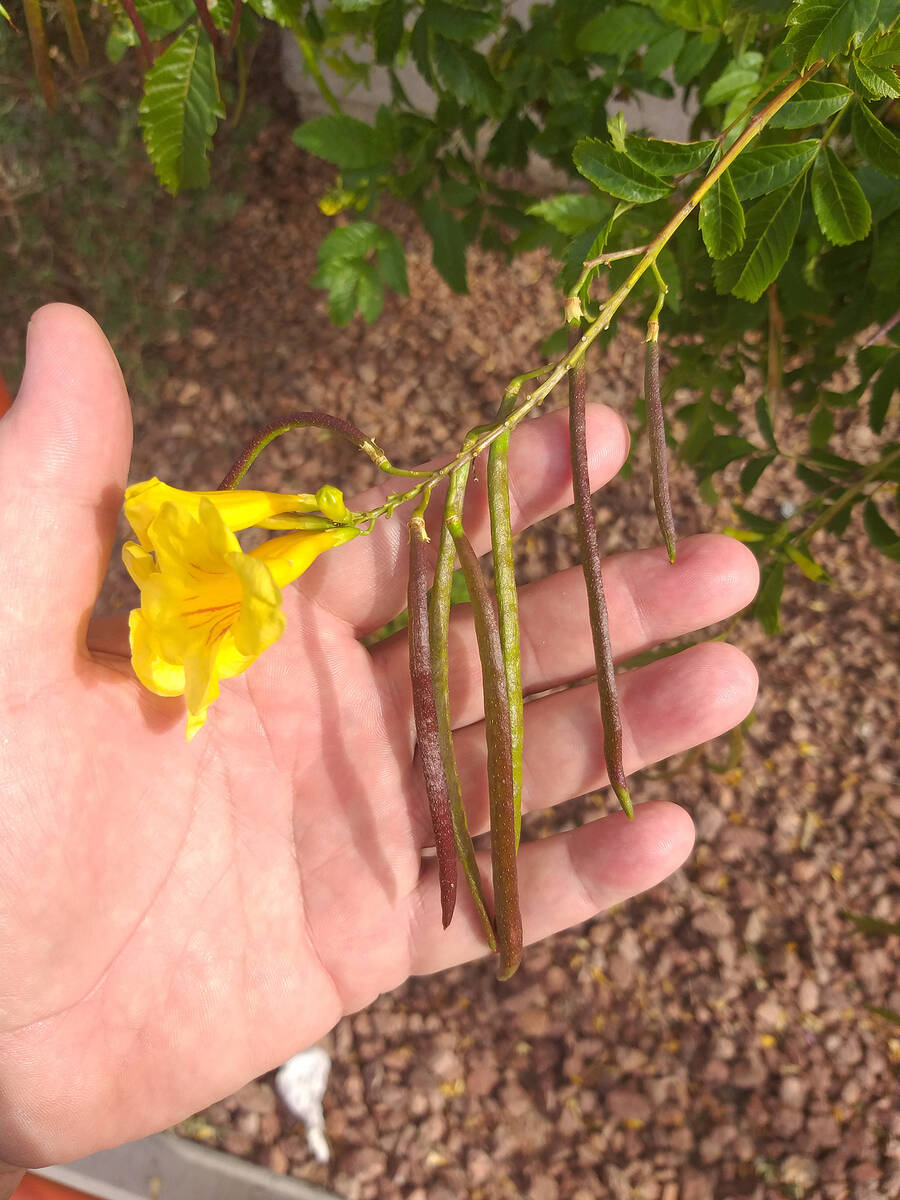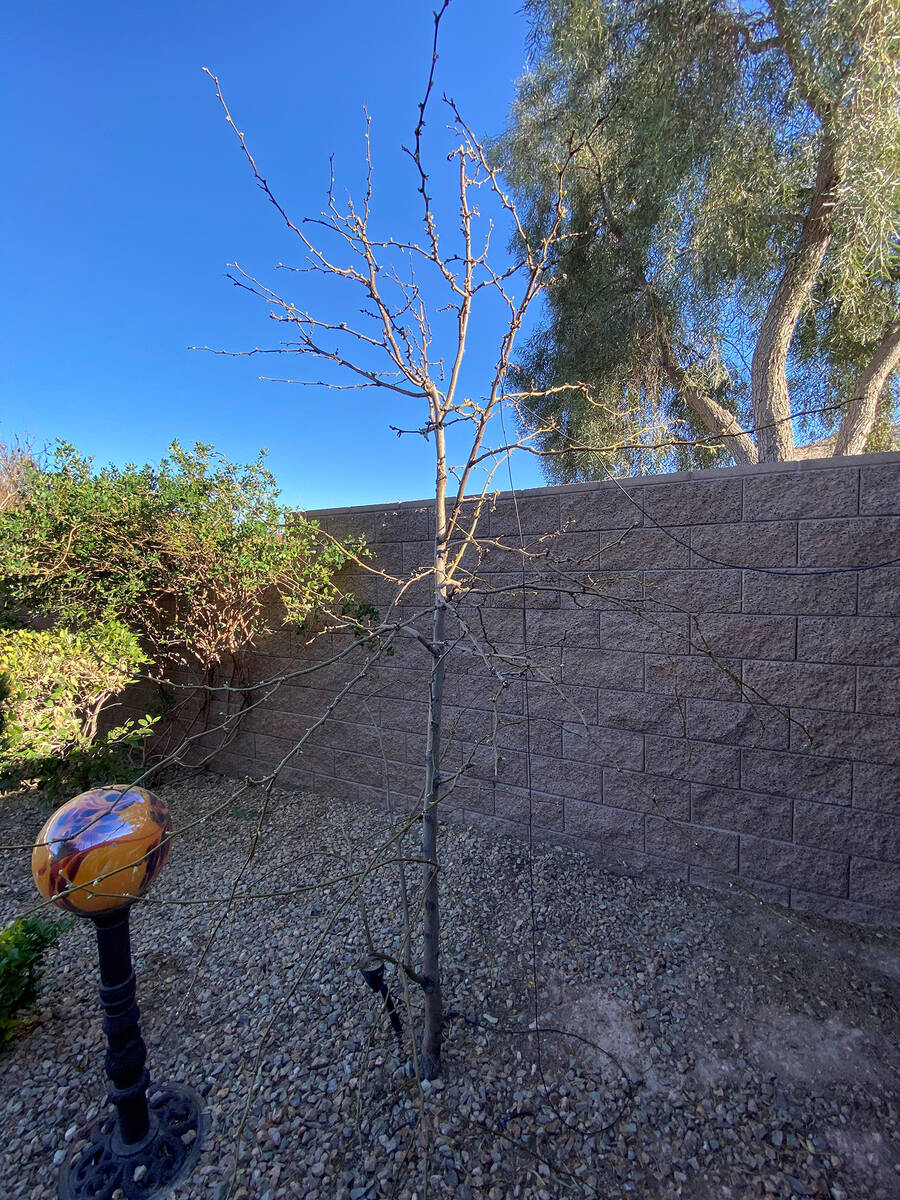Select shrub variety for needed use
Q. I am adding Texas rangers and yellow bells to a bed that has poor drainage beneath it. I want to create some privacy in my yard from my neighbor. The soil I want to buy will end up being 12 inches deep for that area. Is that deep enough? I am worried this will end up as poor drainage. Should I dig a chimney in that bed for better drainage? Are these two plants similar in their water needs?
A. This may sound a little bit odd, but I would find out how tall these shrubs need to be. They should be tall enough to create the privacy needed and not much taller. If 3-4 foot shrub will do the job why plant 8-foot shrubs? Bigger shrubs need more water and they need more maintenance (pruning to keep them smaller) as they get older.
Both Texas rangers and yellow bells are considered xeric in their water use. Texas ranger Gray Cloud and Green Cloud varieties are taller at about 8 feet (planted 6-8 feet apart to form a solid wall) than some of the other Texas ranger varieties like Compacta (to 5 feet) and Cimmaron (to 4 feet) that are planted either 3-4 feet apart (Cimmaron) or 4-5 feet apart (Compacta). Landscape plants used for blocking a scene or as a hedge are planted a distance equal to their height or slightly closer than this if they are round in shape at maturity.
You will have trouble with root rot in Texas ranger if the soils do not drain completely. Plant them on a slight mound to help prevent root rot rather than having the soil level (or in a depression) after planting. Having the soil elevated 6-8 inches and 3-4 feet wide should do the trick for these smaller shrubs.
Texas sage or Texas ranger can handle rock mulch and poor soils provided there is drainage but prefers growing in richer soils that are well-drained. Both shrubs will not tolerate soils that are poorly drained, but Texas ranger is worse than yellow bells in that respect.
Yellow bells (Tecoma stans) is native to wetter areas of the Sonoran and Chihuahuan deserts and can tolerate deep and severe pruning to keep them smaller. They can reach heights to 20 feet but can be severely pruned back to 5-8 feet if necessary. Both plants flower soon after an irrigation application or rainfall. Yellow bells are considered more mesic in their water needs than Texas ranger, which can tolerate fewer applications of water.
I hope you’ll remember that plants don’t use water, people do. Water plants when they need it rather than when you think they need it. The plant that needs water most often sets the tone for how we think plants should be watered in a landscape.
Q. I can’t find the website for recommended landscape plants for the Las Vegas area. Can you help me find it?
A. I think you are talking about the Southern Nevada Water Authority’s website on recommended landscape plants for Southern Nevada. If you search “Southern Nevada Water Authority recommended plant database” you will find it.
The other website I often use is Chris Martin’s at Arizona State University in Tempe, Arizona. Another website worth considering is the University of Arizona’s Saddlebrooke Ranch (north Tucson, Arizona) master gardener recommended plant list. Remember when selecting plants essential to a landscape that 20 F is the minimum winter temperature to consider. Plants with a winter temperature tolerance above this are plants primarily for hobbyists.
Some plant recommendation lists are better for desert climates than others. Some plant databases tell you if the plant is mesic (arising from wet climates) or xeric (arising from desert or dry landscapes). Plant as many desert landscape plants as wanted but if they are watered when water is not needed, water is wasted.
Water use in residential landscapes is controlled by the number of plants used, their mature size and whether they are low in water use. This is called a landscape’s total biomass. There is a fourth factor, the human factor, which controls the application of water. Mixing xeric and mesic plants together always result in mesic plants (plants that need water most often) controlling the applications of water.
It’s important to consider an irrigation technique called hydrozoning when designing home desert landscapes. This technique encourages mesic or xeric plants to be watered at the same time. If this plant list separation isn’t mentioned, then it’s difficult to design landscape irrigations and conserve water.
Q. My golden lead ball tree has not produced any flowers yet. Its branching is vertical and not very horizontal. Is that typical? Still hoping for some golden balls to appear? When?
A. I searched the plant database from Arizona State University in Tempe and it said this semideciduous tree grows to 25 feet and is from limestone areas of the Chihuahuan desert of northern Mexico and southwestern Texas. It tolerates temperatures to about 5 F. When winter temperatures get low enough, this tree will drop its leaves.
This information tells me it’s native to our desert Southwest and will not require frequent irrigations. Since it originates from one of our four desert areas in the Southwest, it is classified as xeric. It also tells me this rounded tree tolerates desert soils (high pH limestone areas) and reaches a mature height of around 25 feet if we are careful on how often we apply water. If we mix nondesert plants with it, then the tree will get larger than reported and fuel water waste because of watering it too often.
I’m comfortable stating this tree will perform well in our climate, was a good choice and can reduce landscape water use.
The golden lead ball tree is a new discovery in our desert nursery trade. Its availability is limited because demand for it is low. Flowering will be between four to six years of age. Flowering at a lower height and younger age can be encouraged by pruning its vertical growth and encouraging more horizontal growth. Its age when it starts to flower won’t be much different, but the tree will be smaller.
Q. After talking to you and checking what was actually needed for privacy, I selected a smaller Texas ranger shrub (Lyn’s Legacy variety), which is planted 4 feet apart and grows only to 5 feet in height rather than 8 feet (Green Cloud and Gray Cloud varieties). I decided the larger varieties were just too big for what I needed. I am opting for Louis Hamilton globe mallow to plant in front of them. Is that too many plants for that area?
A. Very impressive. You matched xeric plants from the Southwestern deserts. They will all be watered with the same frequency so they will have their own irrigation valve and station. If you find there are too many plants in that location as they get bigger, then remove the globe mallow.
Because there are so many plants close together, I suggest watering them with drip tubing spaced 18 inches apart rather than drip emitters. Drip emitters are a better choice when fewer plants are used and they are spaced far apart. Drip tubing is a better choice in areas where lots of plants are spaced close together and they all need the same watering frequency (hydrozoning).
Remember, water conservation depends on a landscape’s total biomass: the total number of plants combined with their size and need for water. Every plant needs water. Some need more (mesic) than others (xeric). Always water mesic plants together and xeric plants together.
When water is applied, the flowers are triggered to form and many of the plants will make viable (living) seed. Often, as in the case of globe mallow, the seed produces new plants. When water is not applied and it is droughty, the plant will not flower and produce seed.
Bob Morris is a horticulture expert and professor emeritus of the University of Nevada, Las Vegas. Visit his blog at xtremehorticulture.blogspot.com. Send questions to Extremehort@aol.com.









